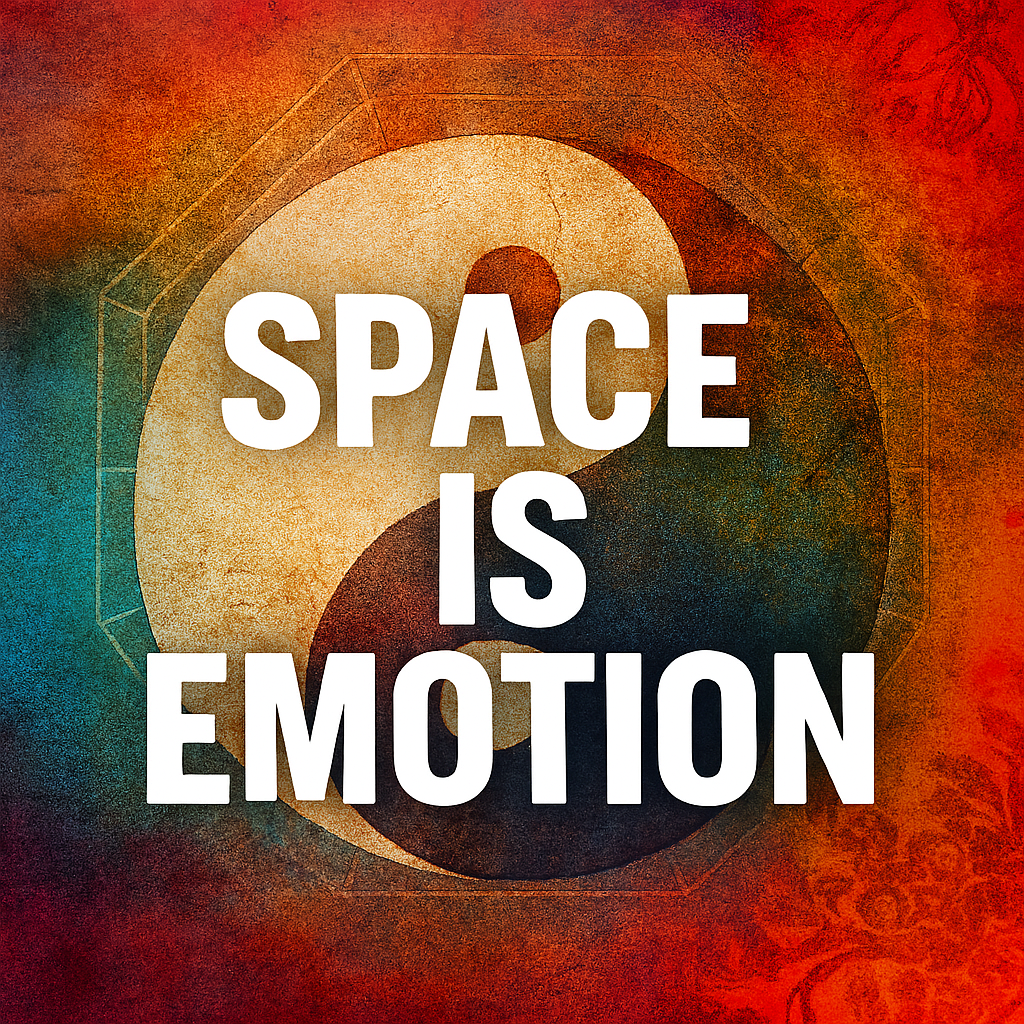
The Psychology Of Feng Shui
Psychology Of Feng Shui
Emotional Experience — WHY FENG SHUI STILL MATTERS
Feng shui is often dismissed as superstition, yet its principles align closely with modern psychological research. At its core, feng shui is a system for understanding how spatial arrangement influences emotional and cognitive states. It treats space not as a backdrop, but as a living participant in human experience. The way we place objects, navigate rooms, and interact with light and color shapes our mood, memory, and behavior.
Psychologists now study similar ideas under environmental psychology and spatial cognition. Concepts like affective atmosphere, restorative environments, and behavioral nudging mirror feng shui’s ancient wisdom.
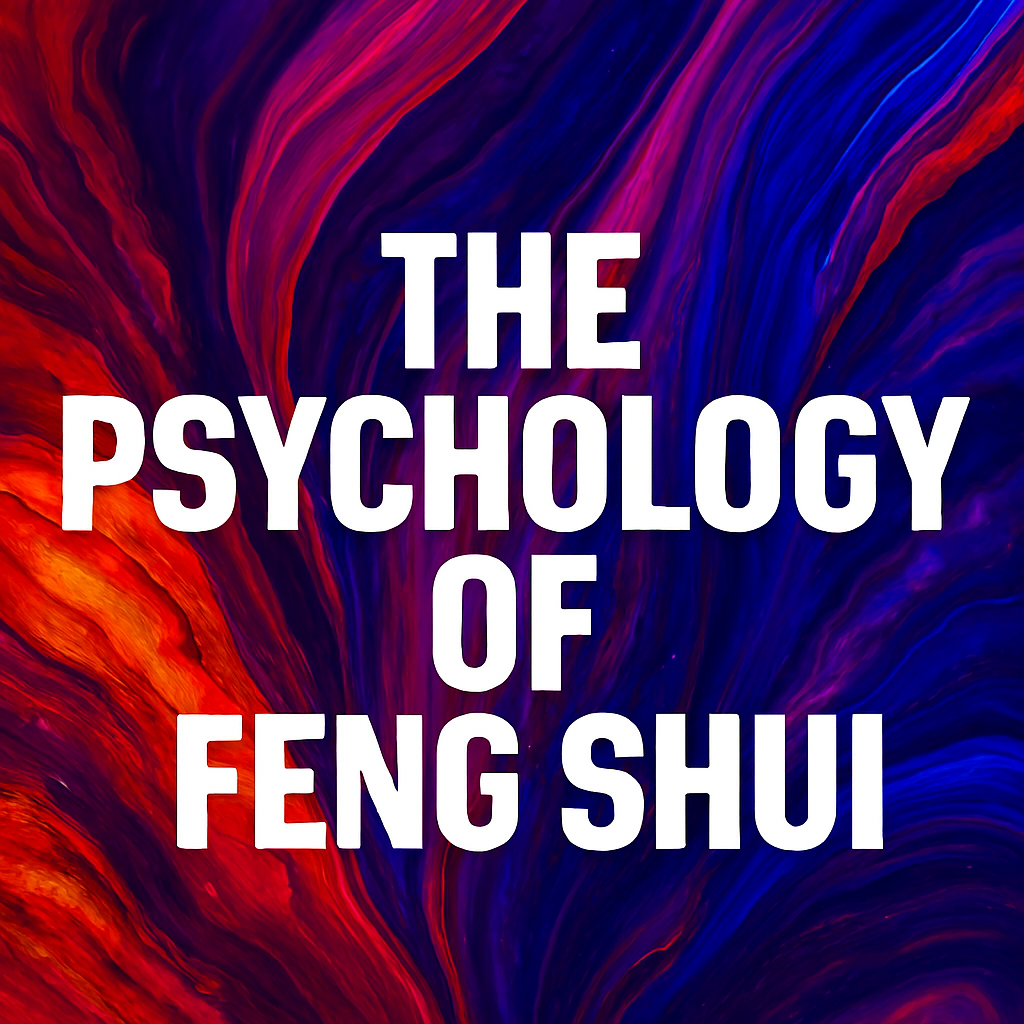
ENERGY FLOW — THE INVISIBLE ARCHITECTURE OF EMOTION
Feng shui begins with qi, the invisible energy that moves through space. In psychological terms, this resembles affective atmosphere—the emotional tone of an environment. Qi is not mystical; it’s metaphorical. It represents how space feels, how it flows, and how it supports or disrupts emotional balance.
When qi is blocked, people often feel anxious, fatigued, or mentally stuck. When it flows freely, they report clarity, vitality, and emotional ease. Layout plays a critical role. Open pathways, balanced furniture placement, and clear sightlines promote psychological comfort. Cluttered corners, obstructed doorways, and chaotic arrangements create tension and cognitive overload.
Feng shui uses the Bagua map to identify energy zones. Each zone corresponds to a life area—health, relationships, career, and more. Psychology supports this with evidence that different spaces activate different emotional responses. A chaotic workspace impairs focus. A serene bedroom improves sleep and emotional regulation.
TABLE — ENERGY FLOW AND PSYCHOLOGICAL PARALLELS
| Feng Shui Concept | Psychological Equivalent | Emotional Impact |
|---|---|---|
| Qi Flow | Affective Atmosphere | Calm, Focused |
| Blocked Qi | Cognitive Overload | Fatigue, Anxiety |
| Open Pathways | Attentional Ease | Clarity, Movement |
| Clutter Zones | Environmental Stress | Distraction, Irritability |
| Entry Points | First Impressions | Safety, Orientation |
COLOR PSYCHOLOGY — HUE AS EMOTIONAL SYMBOL
Color is one of feng shui’s most powerful tools. Each hue carries symbolic meaning and psychological influence. Red represents vitality and stimulation. Blue evokes calm and clarity. Green symbolizes renewal and growth. Yellow brings joy and mental brightness. White suggests purity and openness. Black anchors depth and introspection.
These meanings align with psychological studies on color perception. Warm colors energize and activate the nervous system. Cool colors soothe and relax. Color affects heart rate, mood, and cognitive performance. Feng shui uses color to balance elemental energies. Psychology uses it to prime emotional states and behavioral outcomes.
Therapy rooms often use soft blues and greens to promote calm. Workspaces benefit from focused neutrals and energizing accents. Bedrooms thrive on muted tones that support rest and intimacy. Color is not just decoration—it’s emotional architecture. Feng shui treats color as symbolic medicine. Psychology treats it as sensory stimulus with measurable effects.
TABLE — COLOR MEANINGS AND PSYCHOLOGICAL EFFECTS
| Color | Feng Shui Symbolism | Psychological Effect | Ideal Placement |
|---|---|---|---|
| Red | Vitality | Alertness, Passion | Entryways, Dining Rooms |
| Blue | Calm | Focus, Emotional Depth | Bedrooms, Study Areas |
| Green | Renewal | Healing, Creativity | Living Rooms, Offices |
| Yellow | Joy | Optimism, Mental Energy | Kitchens, Hallways |
| White | Purity | Clarity, Simplicity | Bathrooms, Meditation |
| Black | Depth | Introspection, Grounding | Corners, Accent Walls |
SPATIAL MEMORY — HOW LAYOUT SHAPES RECALL
We remember space emotionally and cognitively. Feng shui arranges rooms to support memory and emotional anchoring. Psychology calls this spatial encoding—how layout affects recall. Open paths and symmetrical arrangements aid retrieval. Clutter and disorganization block memory and increase stress.
Feng shui uses flow and balance to create spatial familiarity. Psychology uses schema and mapping to support cognitive ease. A well-arranged room feels intuitive and safe. It anchors memory through repetition and emotional resonance. Sharp angles and chaotic layouts disrupt spatial memory.
Feng shui avoids poison arrows—harsh lines that create tension. Psychology avoids cognitive dissonance—conflicting cues that confuse the brain. Spatial harmony supports mental clarity and emotional regulation. Memory is grounded in physical space and emotional safety. Feng shui enhances this grounding through intentional design.
TABLE — SPATIAL FEATURES AND MEMORY IMPACT
| Feature | Feng Shui Principle | Psychological Insight | Memory Effect |
|---|---|---|---|
| Symmetry | Balance | Schema Mapping | Easier Recall |
| Open Pathways | Qi Flow | Attentional Ease | Improved Retrieval |
| Sharp Angles | Poison Arrows | Dissonance | Disrupted Memory |
| Familiar Zones | Bagua Anchors | Emotional Anchoring | Stronger Association |
| Clutter | Blocked Qi | Cognitive Overload | Memory Interference |
CLUTTER AND COGNITION — THE MENTAL COST OF MESS
Clutter is more than a visual distraction. It represents emotional residue and cognitive overload. Feng shui treats clutter as blocked qi, a sign of stagnation and unresolved tension. Psychology views clutter as a source of stress, decision fatigue, and impaired executive function.
Messy environments increase mental strain and reduce focus. They interfere with emotional regulation and productivity. Feng shui encourages decluttering as a symbolic reset. Psychology promotes organization as a behavioral intervention. Both disciplines aim to restore clarity and flow.
Decluttering is not just about tidiness—it’s about emotional hygiene. Clean space supports clean thinking. Minimalism becomes therapeutic when it’s intentional and symbolic. Feng shui uses ritual to clear space with purpose. Psychology uses habit formation to maintain order.
Cluttered corners, overfilled shelves, and chaotic surfaces create psychological noise. They disrupt spatial rhythm and emotional ease. Feng shui treats these zones as energy congestion. Psychology treats them as cognitive interference. Both agree—less is more when it comes to mental clarity.
TABLE — TYPES OF CLUTTER AND PSYCHOLOGICAL COSTS
| Clutter Type | Feng Shui View | Psychological Cost | Suggested Remedy |
|---|---|---|---|
| Visual Clutter | Blocked Qi | Stress, Fatigue | Decluttering Rituals |
| Emotional Clutter | Stagnant Energy | Anxiety, Rumination | Symbolic Release |
| Digital Clutter | Fragmented Qi | Decision Fatigue | Minimalist Interfaces |
| Storage Overflow | Energy Congestion | Cognitive Load | Hidden Storage Solutions |
| Paper Piles | Unresolved Qi | Mental Noise | Filing Systems |
LIGHTING — THE MOOD OF ILLUMINATION
Light is a primary shaper of emotional tone. Feng shui values natural light as a source of vitality and clarity. Psychology studies light through its effects on circadian rhythm, serotonin levels, and mood regulation. Bright light energizes. Dim light calms.
Harsh lighting can create overstimulation and irritability. Soft lighting promotes intimacy and relaxation. Feng shui uses mirrors to reflect and amplify light. Psychology uses light therapy to treat seasonal affective disorder and depression. Both disciplines recognize light as a healing force.
Lighting design becomes emotional architecture. It influences how we feel, think, and behave. Feng shui treats light as sacred and symbolic. Psychology treats it as clinical and functional. Balanced lighting supports emotional stability and cognitive performance.
Spaces with layered lighting feel more alive and emotionally responsive. Feng shui places light sources to guide qi and emotional flow. Psychology places light to support behavioral outcomes. Light is not just illumination—it’s emotional modulation.
TABLE — LIGHT TYPES AND EMOTIONAL EFFECTS
| Light Type | Feng Shui Role | Psychological Effect | Ideal Placement |
|---|---|---|---|
| Natural Light | Yang Activation | Mood Elevation | East-facing Windows |
| Soft Light | Yin Balance | Calm Induction | Bedrooms, Meditation Zones |
| Harsh Light | Qi Disruption | Stress Trigger | Avoid in Rest Areas |
| Reflected Light | Qi Amplifier | Emotional Expansion | Mirrors Near Windows |
| Candlelight | Elemental Fire | Intimacy, Focus | Dining, Ritual Spaces |
FURNITURE PLACEMENT — BEHAVIORAL NUDGING
Furniture placement shapes behavior and emotional response. Feng shui arranges furniture to support flow, safety, and connection. Psychology studies this through behavioral nudging and spatial ergonomics. Where we sit, face, and move affects how we feel and interact.
Facing a door increases a sense of control and readiness. Facing a wall reduces it. Feng shui avoids back-to-door setups, which create vulnerability. Psychology calls this threat perception. Open seating fosters connection. Closed seating fosters isolation.
Round tables promote inclusivity and shared energy. Sharp corners create tension and fragmentation. Feng shui uses curved lines and balanced placement to guide qi. Psychology uses layout to influence attention, engagement, and emotional tone.
Furniture is not neutral—it’s behavioral architecture. It nudges emotion, interaction, and cognitive load. Feng shui maps it symbolically. Psychology maps it functionally. Both shape behavior through spatial design.
TABLE — FURNITURE PLACEMENT AND EMOTIONAL OUTCOMES
| Placement Style | Feng Shui Insight | Psychological Outcome | Spatial Strategy |
|---|---|---|---|
| Facing Door | Command Position | Increased Control | Desk Orientation |
| Back to Door | Vulnerable Qi | Threat Perception | Avoid in Seating |
| Round Tables | Social Qi | Inclusion, Openness | Dining Areas |
| Corner Seating | Isolated Qi | Withdrawal | Use for Solitude |
| Open Layout | Qi Circulation | Engagement, Flow | Living Rooms |
SYMBOLISM — OBJECTS AS EMOTIONAL ANCHORS
Objects carry emotional weight and symbolic meaning. Feng shui uses symbolic items to activate specific energies. Psychology calls these emotional anchors—cues that trigger memory, mood, and identity. A plant symbolizes growth. A mirror symbolizes reflection. A photo symbolizes connection.
Placement matters. Feng shui curates objects to balance elements and support life areas. Psychology studies how objects prime behavior and emotional response. Symbols shape mood. They trigger memory and reinforce identity. Feng shui treats objects as energetic tools. Psychology treats them as emotional cues.
A cluttered shelf of random items creates confusion. A curated shelf of meaningful symbols creates coherence. Feng shui encourages intentional decor. Psychology encourages expressive environments. Objects become part of the emotional landscape.
Symbolism is not abstract—it’s embodied. It lives in the things we choose to display. Feng shui uses symbolism to guide qi. Psychology uses it to guide emotion. Both disciplines understand that objects speak.
TABLE — SYMBOLIC OBJECTS AND EMOTIONAL CUES
| Object Type | Feng Shui Symbolism | Psychological Cue | Placement Tip |
|---|---|---|---|
| Plants | Growth, Renewal | Creativity, Calm | East or Southeast |
| Mirrors | Expansion, Clarity | Self-Awareness | Avoid Facing Bed |
| Photos | Connection, Memory | Attachment Activation | Family Zones |
| Crystals | Energy Amplifiers | Focus, Intention | Workspaces |
| Statues | Protection, Identity | Self-Expression | Entryways |
BALANCE — YIN YANG AND EMOTIONAL REGULATION
Balance is the foundation of feng shui. It’s expressed through the dynamic interplay of yin and yang—opposing forces that complement and complete each other. Yin is soft, dark, and receptive. Yang is bright, active, and expansive. Feng shui uses these qualities to shape environments that feel emotionally stable and psychologically responsive.
Psychology mirrors this concept through emotional regulation and arousal theory. Too much yang—bright lights, sharp textures, loud sounds—can lead to overstimulation and anxiety. Too much yin—dim lighting, muted colors, soft surfaces—can result in lethargy and emotional withdrawal. Both systems aim to create environments that support equilibrium and adaptability.
Feng shui achieves balance by pairing contrast: soft with hard, light with dark, open with enclosed. Psychology confirms that such contrasts help the brain stay engaged without becoming overwhelmed. A well-balanced room supports both rest and activity, solitude and connection. It responds to the emotional needs of the moment rather than imposing a fixed mood.
Balance is not static—it’s responsive. Feng shui teaches us to adjust spatial qualities based on time of day, season, and emotional state. Psychology teaches us to monitor internal cues and use external stimuli to regulate them. Together, they offer a model for designing environments that adapt to human emotion rather than suppress it.
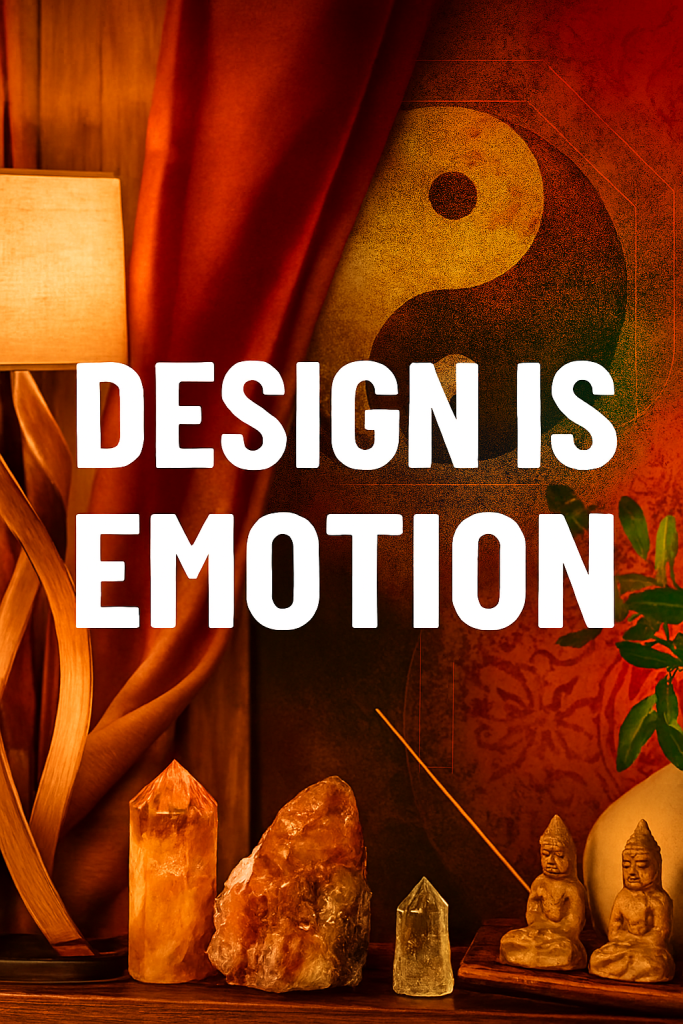
TABLE — YIN YANG TRAITS AND PSYCHOLOGICAL EFFECTS
| Trait | Yin Quality | Yang Quality | Psychological Effect |
|---|---|---|---|
| Light | Soft, Dim | Bright, Sharp | Calm vs Alertness |
| Texture | Smooth, Natural | Glossy, Hard | Soothing vs Stimulating |
| Layout | Open, Flowing | Structured, Active | Relaxation vs Focus |
| Sound | Quiet, Gentle | Loud, Rhythmic | Serenity vs Energy |
| Color | Cool, Muted | Warm, Vibrant | Peace vs Passion |
SYMBOLIC ZONES — MAPPING EMOTION TO SPACE
Feng shui divides physical environments into symbolic zones, each representing a distinct emotional or life domain. These zones are mapped using the Bagua grid, which overlays a space with areas linked to themes like wealth, health, relationships, and creativity. The idea is that spatial placement influences emotional focus. Where we position furniture, decor, and color can reinforce or disrupt our psychological intentions.
Psychology supports this with research on environmental priming and spatial association. A neglected relationship zone may subtly reinforce emotional distance. A cluttered career zone can impair motivation and self-direction. Feng shui invites us to treat space as a mirror of our goals. By activating zones with symbolic elements, we reinforce emotional clarity and behavioral alignment.
This approach turns layout into life design. Feng shui offers a symbolic blueprint, while psychology provides empirical validation. Together, they transform rooms into responsive systems. A home becomes more than shelter—it becomes a spatial autobiography, shaped by intention and emotion.
TABLE — BAGUA ZONES AND EMOTIONAL THEMES
| Zone | Feng Shui Focus | Emotional Theme | Suggested Elements |
|---|---|---|---|
| Wealth | Abundance | Growth, Confidence | Plants, Purple, Flowing Water |
| Health | Vitality | Balance, Strength | Earth Tones, Wood, Open Space |
| Relationships | Love, Connection | Intimacy, Trust | Pairs of Objects, Pink, Soft Textures |
| Career | Life Path | Purpose, Flow | Black, Water, Movement |
| Creativity | Expression | Joy, Innovation | White, Metal, Artistic Decor |
TRANSITIONS — DOORS, THRESHOLDS, AND EMOTIONAL SHIFT
Transitions are critical in feng shui. Doorways, hallways, and thresholds represent shifts in energy and emotion. They mark the movement from one zone to another, and their design influences how smoothly that shift occurs. A blocked doorway can create psychological resistance. A clear threshold invites flow and openness.
Psychology studies transitions through behavioral cues and spatial orientation. Moving from a cluttered hallway into a serene room can reset emotional tone. Poorly designed transitions—tight corridors, abrupt lighting changes—can increase stress and disorientation. Feng shui treats these spaces as energetic gateways. Psychology treats them as emotional regulators.
Smooth transitions support emotional continuity. They help the body and mind adjust without friction. Feng shui uses curved lines, soft lighting, and open sightlines to ease movement. Psychology recommends gradual sensory shifts and clear spatial cues. Together, they create environments that guide emotion gently from one state to another.
TABLE — TRANSITION FEATURES AND EMOTIONAL EFFECTS
| Feature | Feng Shui Role | Psychological Impact | Design Strategy |
|---|---|---|---|
| Doorways | Energy Gateway | Emotional Entry Point | Keep Clear, Use Symmetry |
| Hallways | Qi Conduit | Mood Shift Zone | Use Light, Avoid Clutter |
| Thresholds | Symbolic Shift | Behavioral Cue | Define with Texture or Color |
| Sightlines | Flow Continuity | Orientation, Safety | Maintain Visual Openness |
| Lighting Changes | Emotional Gradient | Arousal Regulation | Use Dimmers, Layered Light |
MATERIALS — TEXTURE, WEIGHT, AND EMOTIONAL RESPONSE
Materials carry emotional weight. Feng shui assigns symbolic meaning to textures, densities, and finishes. Wood represents growth and flexibility. Metal symbolizes precision and clarity. Stone offers grounding and permanence. Psychology studies these effects through tactile perception and sensory integration.
Soft textures promote relaxation and intimacy. Hard surfaces increase alertness and formality. Feng shui uses material contrast to balance yin and yang. Psychology uses it to regulate sensory input and emotional tone. A plush rug can soothe overstimulated nerves. A glass tabletop can sharpen focus.
Material choice affects how we feel in a space. It influences comfort, attention, and emotional safety. Feng shui encourages natural materials for their energetic resonance. Psychology supports them for their calming and restorative properties. Together, they guide us toward environments that feel emotionally congruent.
TABLE — MATERIALS AND EMOTIONAL RESPONSES
| Material | Feng Shui Element | Psychological Effect | Ideal Use |
|---|---|---|---|
| Wood | Growth, Flexibility | Creativity, Calm | Furniture, Flooring |
| Metal | Precision, Clarity | Focus, Structure | Frames, Fixtures |
| Stone | Grounding, Stability | Security, Strength | Walls, Accents |
| Fabric | Softness, Comfort | Intimacy, Relaxation | Upholstery, Curtains |
| Glass | Expansion, Flow | Alertness, Transparency | Tables, Dividers |
EMOTIONAL SAFETY — PRIVACY, CONTROL, AND SPATIAL TRUST
Emotional safety is a core outcome of good feng shui. It’s created through spatial cues that support privacy, control, and predictability. A room that feels exposed can trigger anxiety. A space that offers containment and choice fosters trust and relaxation. Feng shui uses layout, lighting, and boundaries to create emotional refuge.
Psychology studies this through environmental stress and perceived control. People feel safer in spaces where they can see exits, adjust lighting, and control noise. Feng shui places seating in command positions—facing the door, with a solid wall behind. Psychology confirms that such arrangements reduce threat perception and increase emotional stability.
Privacy is not isolation—it’s selective openness. Feng shui uses screens, plants, and partitions to create soft boundaries. Psychology uses zoning and sensory control to support emotional regulation. Together, they design spaces that protect without disconnecting.
TABLE — SPATIAL FEATURES AND EMOTIONAL SAFETY
| Feature | Feng Shui Strategy | Psychological Benefit | Application Tip |
|---|---|---|---|
| Command Position | Facing Entry, Back Support | Reduced Anxiety, Control | Desk and Chair Placement |
| Soft Boundaries | Screens, Plants | Privacy, Emotional Ease | Use in Shared Spaces |
| Adjustable Light | Layered Sources | Mood Regulation | Include Dimmers, Lamps |
| Noise Control | Sound Absorption | Stress Reduction | Rugs, Curtains, Panels |
| Exit Visibility | Clear Sightlines | Safety, Orientation | Avoid Obstructed Views |
FLOW AND FUNCTION — HOW MOVEMENT SHAPES EMOTION
Movement through space affects how we feel and behave. Feng shui emphasizes the importance of unobstructed flow, guiding people through rooms with ease and intention. Psychology studies this as spatial navigation and behavioral mapping. When movement feels natural, people report higher comfort, focus, and emotional regulation.
Blocked pathways create frustration and cognitive friction. They interrupt rhythm and increase stress. Feng shui uses curved lines, open layouts, and clear transitions to support emotional flow. Psychology supports similar principles in workplace design, therapeutic environments, and urban planning. Movement is not just physical—it’s emotional choreography.
Functional flow also affects decision-making and attention. A space that guides movement intuitively reduces mental load. Feng shui treats this as energetic alignment. Psychology treats it as environmental efficiency. Both disciplines agree: how we move through space shapes how we think and feel.
TABLE — MOVEMENT FEATURES AND EMOTIONAL EFFECTS
| Feature | Feng Shui Principle | Psychological Insight | Emotional Outcome |
|---|---|---|---|
| Open Pathways | Qi Circulation | Attentional Ease | Calm, Clarity |
| Curved Lines | Flow Enhancement | Reduced Stress | Emotional Softness |
| Clear Transitions | Zone Definition | Behavioral Cueing | Predictability, Safety |
| Obstructed Routes | Blocked Qi | Cognitive Friction | Irritability, Fatigue |
| Natural Movement | Spatial Rhythm | Engagement, Comfort | Emotional Stability |
RHYTHM AND REPETITION — PATTERN AS EMOTIONAL STABILITY
Rhythm in design creates emotional predictability. Feng shui uses repetition of shapes, colors, and materials to establish harmony and flow. Psychology supports this through pattern recognition and cognitive fluency. Repeated elements reduce mental effort and increase emotional comfort. They help the brain feel safe.
A room with consistent textures and recurring motifs feels coherent. It invites relaxation and focus. Feng shui uses rhythmic placement to guide qi and reinforce intention. Psychology uses it to reduce decision fatigue and support emotional regulation. Pattern becomes a form of spatial reassurance.
Too much variation can feel chaotic. Too little can feel dull. Feng shui balances repetition with contrast. Psychology calls this optimal stimulation. The goal is emotional rhythm—spaces that pulse with clarity, not noise. Repetition is not redundancy. It’s emotional scaffolding.
TABLE — DESIGN RHYTHM AND EMOTIONAL EFFECTS
| Element | Repetition Type | Psychological Benefit | Feng Shui Function |
|---|---|---|---|
| Color | Tonal Consistency | Mood Stability | Elemental Balance |
| Shape | Geometric Rhythm | Cognitive Ease | Flow Direction |
| Texture | Material Echo | Sensory Coherence | Yin-Yang Calibration |
| Layout | Spatial Pattern | Predictability | Qi Circulation |
| Symbol | Intent Reinforcement | Emotional Anchoring | Zone Activation |
HEIGHT AND SCALE — VERTICALITY AND EMOTIONAL PERCEPTION
Height influences how we perceive space emotionally. Feng shui considers ceiling height, vertical lines, and elevation as factors in energy movement. Psychology studies this through spatial perception and emotional scaling. High ceilings can evoke openness and inspiration. Low ceilings can create intimacy or confinement.
Verticality affects mood. Tall plants, shelves, and artwork draw the eye upward, expanding emotional space. Feng shui uses vertical elements to lift qi and create aspiration. Psychology links vertical scale to arousal and cognitive framing. A room that feels too compressed can trigger stress. A room that feels too vast can feel impersonal.
Balance is key. Feng shui recommends proportional design—nothing too towering, nothing too low. Psychology supports this with evidence that scale affects comfort and attention. Vertical rhythm helps regulate emotional intensity. It’s not just about height—it’s about emotional altitude.
TABLE — VERTICAL ELEMENTS AND EMOTIONAL RESPONSES
| Element | Feng Shui Role | Psychological Effect | Placement Strategy |
|---|---|---|---|
| Ceiling Height | Qi Expansion | Openness, Creativity | Avoid Overcompression |
| Tall Plants | Growth Symbol | Uplift, Vitality | Corners, Entryways |
| Vertical Art | Emotional Lift | Focus, Aspiration | Eye-Level to Ceiling |
| Shelving | Layered Qi | Organization, Control | Balanced Height Distribution |
| Hanging Lights | Energy Anchor | Mood Framing | Use in Central Zones |
EMOTIONAL ZONING — FUNCTIONAL SPACE AS MOOD MAP
Every room contains emotional zones. Feng shui identifies these through the Bagua map and elemental placement. Psychology studies zoning through behavioral design and emotional mapping. Zones help people navigate mood, intention, and activity. A reading corner invites reflection. A social zone invites connection.
Feng shui uses furniture, lighting, and decor to define zones. Psychology uses spatial cues and environmental triggers. Emotional zoning reduces ambiguity. It helps people feel grounded and purposeful. A well-zoned space supports transitions between tasks and emotional states.
Zones should be clear but flexible. Feng shui avoids rigid boundaries. Psychology supports adaptable environments. Emotional zoning is not about control—it’s about clarity. It turns space into a behavioral compass.
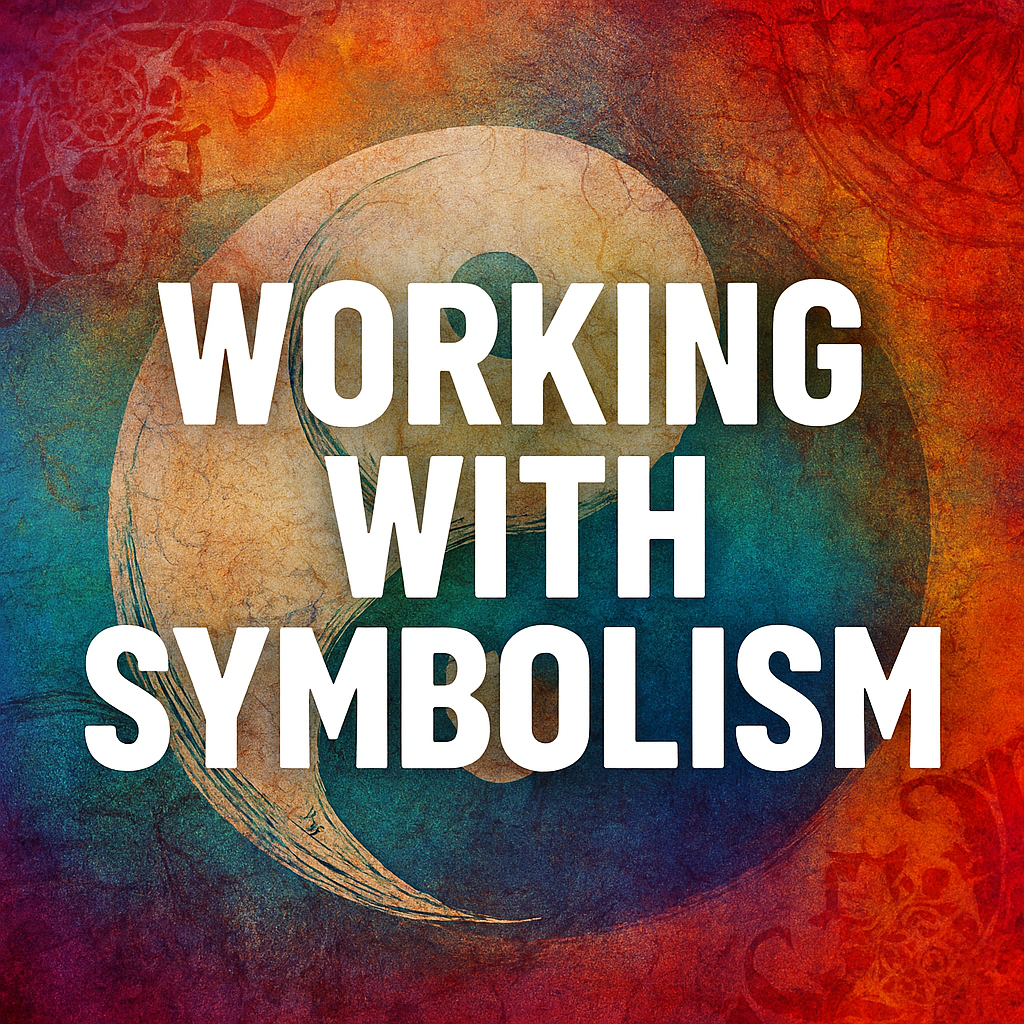
TABLE — EMOTIONAL ZONES AND FUNCTIONAL DESIGN
| Zone Type | Feng Shui Focus | Psychological Function | Design Feature |
|---|---|---|---|
| Rest Zone | Yin Activation | Relaxation, Recovery | Soft Textures, Low Light |
| Work Zone | Yang Activation | Focus, Productivity | Structured Layout, Bright Light |
| Social Zone | Qi Circulation | Connection, Engagement | Open Seating, Warm Colors |
| Reflective Zone | Inner Qi | Introspection, Calm | Minimal Decor, Natural Light |
| Transition Zone | Flow Management | Emotional Shift | Clear Pathways, Neutral Tones |
EMOTIONAL CONTRAST — USING DIFFERENCE TO CREATE BALANCE
Contrast creates emotional clarity. Feng shui uses opposing elements—light and dark, soft and hard, open and enclosed—to balance energy. Psychology supports this through sensory contrast and emotional differentiation. Contrast helps the brain distinguish zones, moods, and intentions. It prevents monotony and overstimulation.
A room with only soft textures may feel dull. A room with only hard surfaces may feel harsh. Feng shui pairs opposites to create dynamic equilibrium. Psychology calls this optimal arousal. Emotional contrast keeps the mind engaged and the body regulated.
Contrast is not conflict. It’s coordination. Feng shui teaches us to use contrast symbolically. Psychology teaches us to use it behaviorally. Together, they create spaces that feel alive, responsive, and emotionally intelligent.
TABLE — CONTRAST PAIRS AND EMOTIONAL BALANCE
| Contrast Pair | Feng Shui Symbolism | Psychological Effect | Design Application |
|---|---|---|---|
| Light vs Dark | Yin-Yang Balance | Mood Framing | Layered Lighting |
| Soft vs Hard | Elemental Texture | Sensory Regulation | Mixed Materials |
| Open vs Enclosed | Qi Flow Control | Emotional Safety | Zoning with Screens |
| Warm vs Cool | Color Temperature | Arousal Modulation | Balanced Palette |
| High vs Low | Vertical Rhythm | Spatial Comfort | Proportional Furniture |
CONCLUSION — DESIGNING FOR EMOTIONAL INTELLIGENCE
Feng shui is not just about aesthetics—it’s about emotional architecture. It offers a symbolic system for designing environments that support clarity, connection, and psychological wellbeing. Modern psychology validates many of its principles, from spatial flow to sensory regulation. Together, they form a toolkit for emotional intelligence in space.
Every room tells a story. Every object carries weight. Feng shui teaches us to curate that story with intention. Psychology teaches us to measure its impact. When we align space with emotion, we create environments that heal, inspire, and evolve with us.
JOIN THE DISCUSSION — SPACE AS SYMBOLIC LANGUAGE
How does your space shape your emotional life? Which feng shui principles resonate most with your experience? Have you noticed how layout, light, or color affect your mood and focus?
fengshui #psychologyofspace #emotionalarchitecture #symbolicdesign #spatialintelligence #environmentalpsychology #yinandyang #designwithintention #cognitiveclarity #affectiveatmosphere #editorialmodularity #emotionalresonance #layoutandemotion #colorpsychology #declutteryourmind #flowandfunction #biophilicdesign #emotionalzoning #spatialrhythm #meaningfulspaces

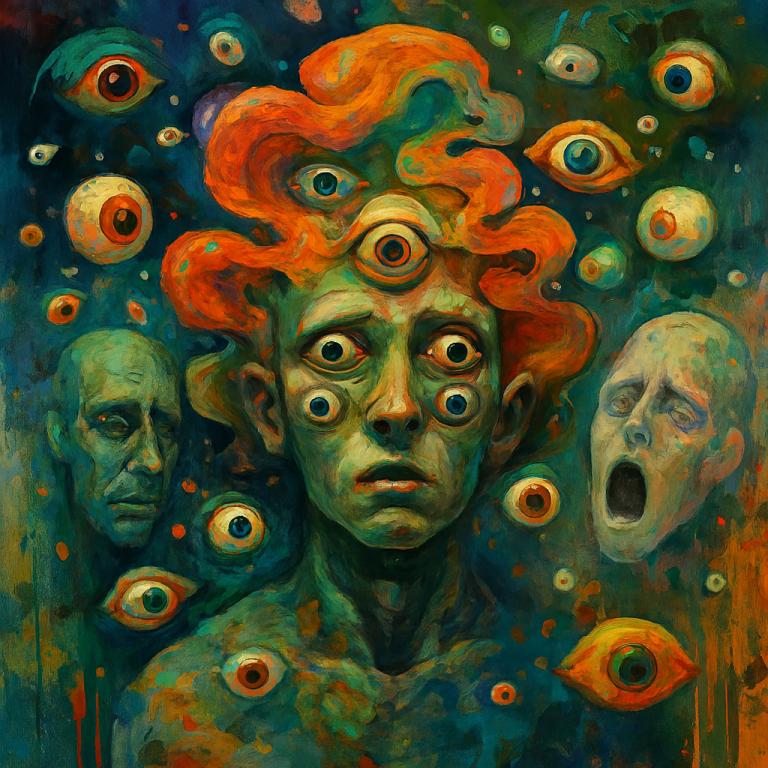
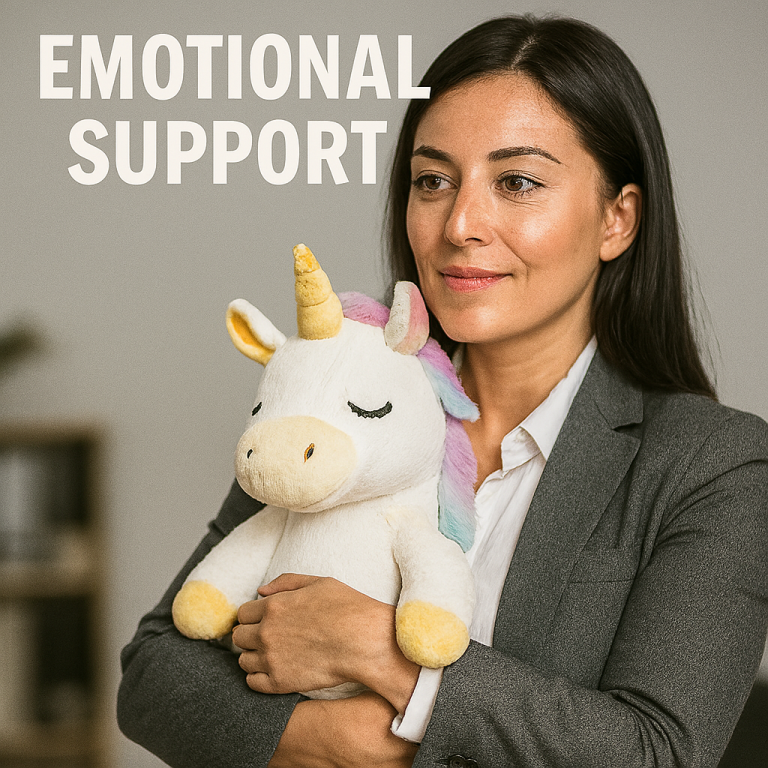
4 thoughts on “The Psychology Of Feng Shui — How Spatial Design Shapes Good Energy”